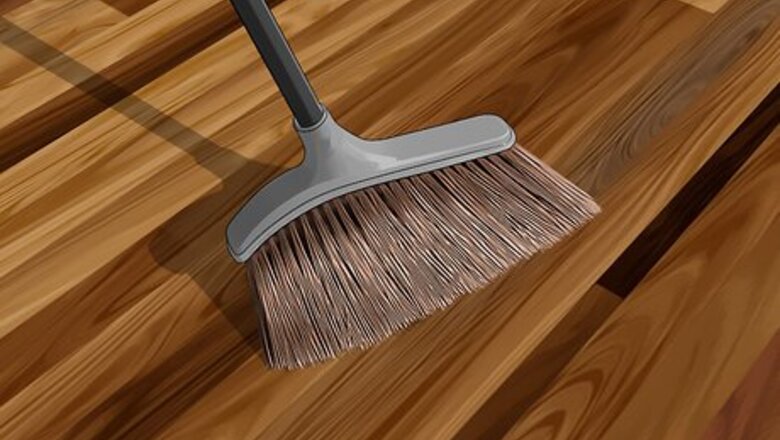
views
Mopping with Vinegar and Water
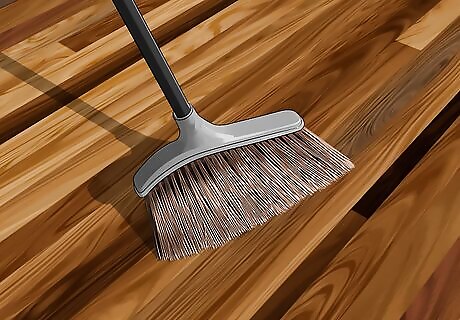
Sweep or vacuum your floor. Remove all dust and debris. If left on the floor while you mop, they can scratch your floor. Use a dust mop after sweeping or dusting to remove fine dust particles. Sweep or vacuum regularly to keep floors clean and reduce the need for mopping.
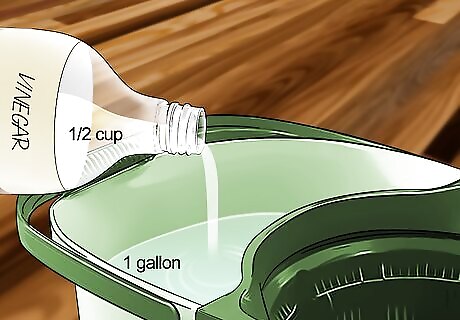
Make a solution of vinegar and warm water. Combine ½ cup (120 mL) of white vinegar with a gallon (3.785 L) of warm water in a bucket. You can also add 2-3 drops of essential oils to this mixture. Use this solution for mopping your hardwood floors.
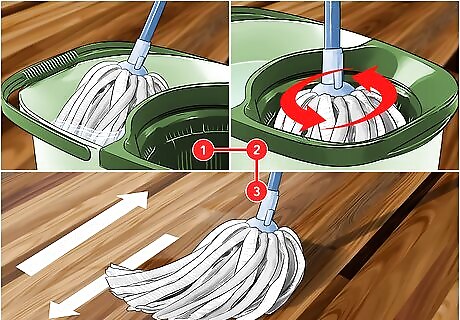
Mop with the vinegar and water solution. Dip a mop into this solution and wring it out until the mop is only damp. Mop in the direction of the wood until you've covered the whole floor. Change the vinegar and water solution if it gets too dirty while you mop. Try a solution of ¼ cup (60 mL) of apple cider vinegar to one gallon (3.785 L) of warm water instead of the white vinegar.
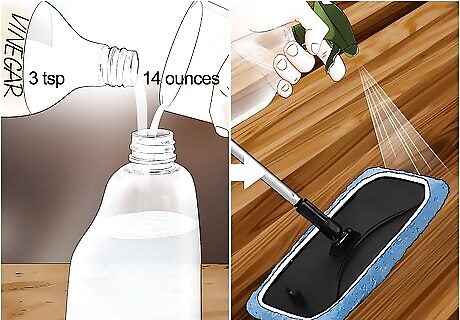
Use a spray bottle and microfiber mop. Fill a spray bottle with three teaspoons (14.786 mL) of white vinegar and 16 ounces (473.176 mL) of warm water. Wet the head of a microfiber mop with warm water and wring it out until the mop is only damp. Spray the vinegar and water solution on the floor and wipe it up with the mop. Use this same ratio of vinegar to water in your refillable spray mop.
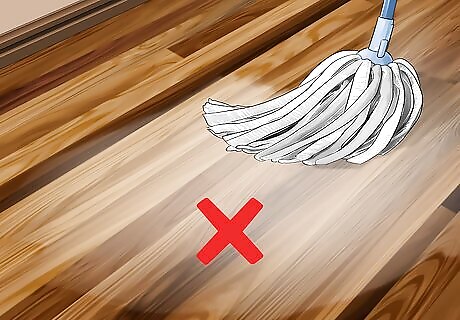
Don't let your floors get too wet. Don't use a very wet mop because too much water can damage your floor. Avoid commercial cotton mops because they make the floor very wet. Try a sponge mop instead. Wipe off any extra moisture left on your floor after you mop to protect your floors. Open doors and windows to accelerate the drying process. Don't let anyone walk on your floors until they are dry.
Using Other Cleaning Techniques
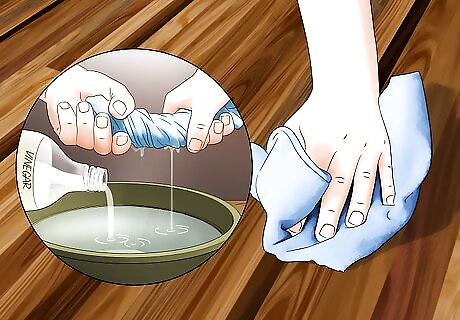
Clean small areas manually with vinegar and a cloth. Use the vinegar and water solutions in the proportions above and a clean rag. Dip the rag in the solution in the bucket and wring it out entirely so it is only a damp. Rub the floor with the damp rag, working in sections. Wet the rag as often as needed as you cover the floor. Alternatively, clean using the vinegar in the spray bottle and a clean rag. Spray the vinegar and water solution on the floor and wipe it up with your rag. Dry the floor as you go with a clean rag.
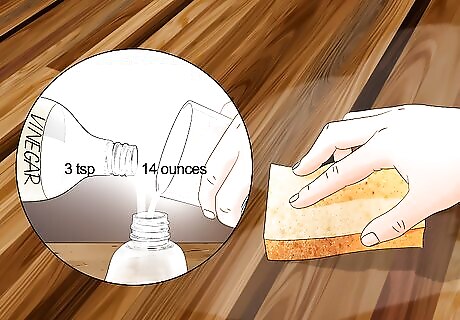
Scrub sticky messes with a sponge. Spray a solution of white vinegar and water in the ratios above on tough, sticky messes. Next, scrub the mess with a scrubbing sponge. Only use a semi-abrasive pad. Finally, wipe up the mess with warm water and dry the floor completely with a clean rag.
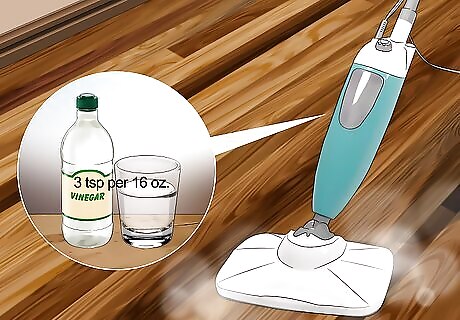
Use a vinegar solution in your steam mop. Add 3 teaspoons (14.786 mL) of white vinegar to every 16 ounces (473.176 mL) of distilled water you use in your steam mop. Trigger the steam infrequently to prevent getting your floor too wet. If possible, lift the mop off the floor when you trigger the steam so it just lightly wets the cleaning cloth. Wipe any moisture off the floor with a clean towel or rag after steam cleaning your hardwood floor.
Cleaning with Vinegar-Based Solutions
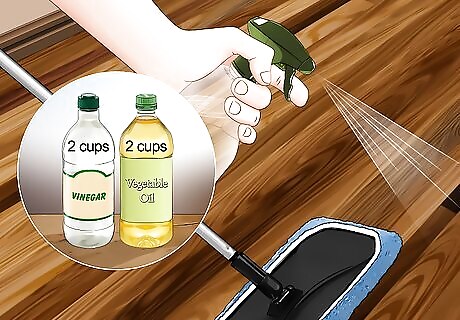
Clean with oil and vinegar. Mix two cups (480 mL) of white vinegar with two cups (480 mL) of vegetable oil in a spray bottle. Shake to blend the solution well. Spray enough solution to thinly coat a small area of your floor. Rub the solution into your floor with a clean rag. Dry the same section of the floor by buffing in circles with a separate clean rag. Repeat to clean the whole floor. You can also use a clean mop to rub the solution into the floor. Mix a fresh batch of this solution each time you use it so the oil doesn't become rancid.

Make a cleansing polish with vinegar, olive oil and hot water. Combine ¼ cup (120 mL) of olive oil and ⅓ cup (80 mL) of white vinegar. Add in 5 cups (1.2 L) of hot water. You can also put in up to 12 drops of essential oils. Polish the floor using this solution, either with a damp mop or on your hands and knees with a clean rag. Buff the floor in circles with a clean rag after you finish polishing the floor.

Make orange vinegar. Take a glass jar and fill it a third of the way with dried orange peel or completely fill it with fresh orange peel. Pour in white vinegar until the vinegar is one inch (25.4 mm) from the top of the jar. Put a plastic lid on the jar and let the mixture sit for one or two weeks. After a couple of weeks, strain the peel from the vinegar and preserve the vinegar in a clean container. Clean your floors using a method described above using a combination of ½ cup (120 mL) of the orange vinegar with two gallons (7.57 L) of water.
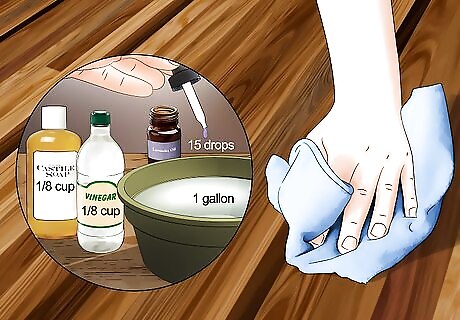
Combine soap with the vinegar. Mix ⅛ cup (30 mL) of plant-based or castile soap with ⅛ cup (30 mL) of white vinegar and one gallon (3.785 L) of warm water. Add up to 15 drops of essential oils if you wish. Use this to clean your floors as described above. Rinse the floor well with hot water and dry it completely with a clean, dry towel or rag. For extra heavy or sticky messes, add ¼ cup (60 mL) of baking soda to this solution. Be sure to rinse this off well with hot water and dry the floor completely after cleaning.



















Comments
0 comment